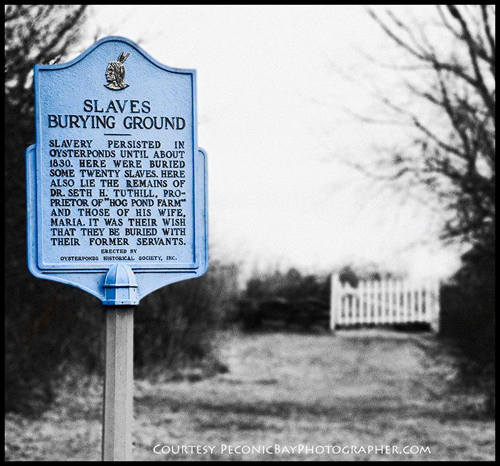In Orient, a 19th-century burial ground for slaves

The North Fork of Long Island probably isn’t a place most people associate with slavery, but it “persisted in Oysterponds until about 1830,” according to a plaque marking the Slaves Burying Ground in Orient.
Highlighted this week as Suffolk County Historical Society’s “Photo of the Week,” 20 slaves are buried at the small, picturesque site, which is located on Narrow River Road and now owned by the Oysterponds Historical Society.
The remains of Dr. Seth Tuthill, proprietor of Hog Pond Farm, and his wife, Maria, are also interred there. They died in 1850 and 1840, respectively. The site’s marker states it was the couple’s “wish that they be buried with their former servants.”
This was highly unusual, according to Doris Glover and Jean LaPorte, authors of “Genealogical History of the Tuthill Family.”
“It was unthinkable … that slaves be buried with their owners, in cemeteries of white people,” they wrote.
Regardless, the Tuthills reportedly formed strong bonds with their slaves and wanted to be buried alongside them, Suffolk County Historical Society officials wrote in an email. Unable to find any existing cemeteries that would accommodate their wishes, they created the Slaves Burying Ground on a portion of their property, using granite boulders as gravestones.








